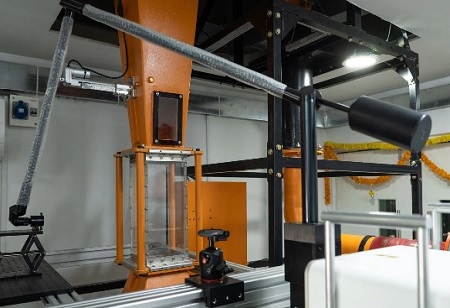
Raindrop Research Facility at IIT Hyderabad will aid in the accurate forecasting of rainfall

 In order to more accurately anticipate rainfall, the Indian Institute of Technology Hyderabad (IITH) has created the Raindrop Research Facility (RRF). This facility simulates meteorological conditions from the clouds to the ground. On Friday, NITI Aayog member V.K. Saraswat opened the facility.
In order to more accurately anticipate rainfall, the Indian Institute of Technology Hyderabad (IITH) has created the Raindrop Research Facility (RRF). This facility simulates meteorological conditions from the clouds to the ground. On Friday, NITI Aayog member V.K. Saraswat opened the facility.
Since rainfall is impacted by a variety of variables and meteorological conditions, accurate rainfall prediction is one of the biggest challenges in environmental study. The RRF will provide a more precise picture of rainfall, assisting in a better understanding of global climate change.
One of the major limitations in rainfall modelling is the lack of fundamental knowledge of the microphysical processes like coalescence, breakup, and phase change in the actual atmospheric conditions, according to Kirti Sahu, lead researcher at RRF and professor in the department of chemical engineering at IITH.
"Temperature can be adjusted from -10 degrees Celsius to 40 degrees Celsius, and relative humidity can be maintained between zero and saturation using the new experimental facility created at IITH. In order to determine the shape and size distributions of raindrops at different altitudes, we can simulate the dynamic atmospheric conditions from cloud to ground. The accuracy of rainfall forecasts will be improved using this information. As opposed to the other measurement techniques now in use, this methodology is a far better option."
The IIT Hyderabad-developed machine learning-based digital holography approach has become a potent tool for recording three-dimensional data about raindrops with high spatial resolution. When combined with the distinctive experimental facilities, this method will help to improve rainfall forecasts. Director of IITH B.S. Murty remarked, "This facility is anticipated to offer a wealth of knowledge regarding weather forecasting, especially regarding rainfall. It will be helpful not only for our nation but for the entire world because it will make rainfall predictions considerably more accurate."